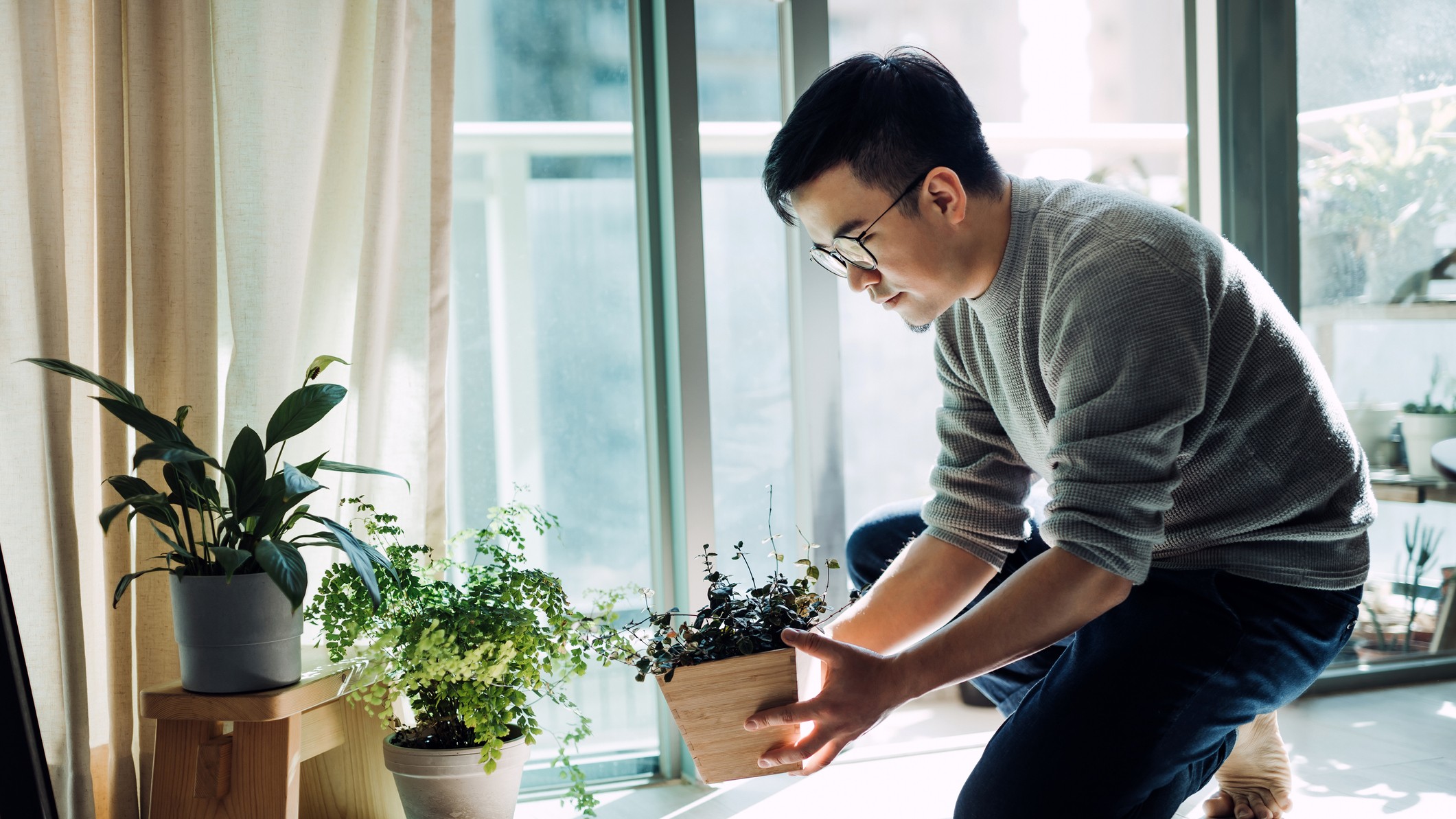Which plants need humidity?
Knowing which plants need humidity and how they can get it is vital to creating ideal environments for houseplants

Trying to figure out which plants need humidity to thrive may feel like a daunting task, but it’s actually less complicated than it sounds. The majority of plants that we keep in our homes are typically native to tropical areas of the world that are often hot and humid. While most homes lack the humidity needed for healthy plants, investing in one of the best humidifiers can ensure your plants thrive.
Keeping the humidity in your home at the appropriate level is vital when it comes to the health and wellbeing of your plants. Because the pores found on plant leaves take in carbon dioxide and expel oxygen and water, they’re losing a lot of water from their leaves which humidity helps to replenish.
To help you identify which plants need humidity, we’ve compiled a helpful list below, including how you can create more humidity in your home and some additional tips to ensure your plants stay happy and healthy.
Humidity in the home
Humidity levels in the home can affect indoor plants. Relative humidity measures the amount of water vapor in the air compared to the current temperature. At 100% relative humidity, the air is holding as much moisture as it can at that temperature.
Greenhouses have a relative humidity at 50% or higher, but these levels are too high for homes. High humidity levels can trigger the growth of harmful bacteria and molds and should be controlled indoors, states the Mayo Clinic.
Between 40 to 50% relative humidity is the perfect balance for indoor plants, according to a University of Georgia publication. Many indoor plants need this level of humidity in order to thrive, which may come in the form of a humidifier designed to add moisture to the air.
Which plants thrive in humid conditions?
Most indoor plants, with the exception of cacti and succulents, thrive in more humid conditions. Tropical and subtropical plants especially need humidity; here, we look at a few of the most popular types.
Get the world’s most fascinating discoveries delivered straight to your inbox.
Ferns
Ferns come in a variety of types, with more than 10,000 species. They produce lush green foliage that can brighten up a room. But ferns are water lovers and most naturally grow in warm, damp places, like rainforests. Dry air is the biggest obstacle to growing ferns indoors. If the tips of a fern are becoming dry and brown, the plant is not in a humid enough environment.
Orchids
Orchids are found throughout the world, but most grow in the tropics and subtropics. Nearly all orchids will thrive in environments with 40 to 70 percent relative humidity, states The American Orchid Society. Even orchids that grow in desert-like conditions are exposed to periods of humidity in this range.
Marantas
Marantas are gorgeous indoor plants with a wide variety of colors and patterns to their leaves. The leaves open and close with the light, giving them the popular name of “prayer plants”. These are tropical plants, originating in the rainforests of Central and South America. New York Botanical Gardens state that maranta require consistent humidity. They recommend using a pebble tray or misting daily.
Pothos
Pothos are easy-to-grow plants that can survive low light conditions, which is why they are often seen in office buildings. These climbing vine plants are native to the Solomon Islands, a place that is hot and humid year-round. In a home with adequate humidity levels, or especially in rooms like bathrooms, pothos grow into lush, sprawling plants.
Bromeliads
The bromeliads often kept as houseplants have broad green leaves and a brightly colored central leaf structure that resembles a flower. These water holders are called tanks and can come in pink, orange, yellow, and red, among other bright colors. Bromeliads require humid air to prosper and may need to be misted frequently to increase humidity.
Pilea peperomioides
Circular leaves jut out on skinny stems in the pilea peperomioides. It’s native to Southern China and also named the Chinese money plant, as the leaves look like coins. The Pilea requires high levels of humidity to thrive or else their signature leaves may begin to yellow.

How can you create humidity at home?
The air in many homes can be too dry for indoor tropical plants. This is especially true in the winter when heating systems are in use. Using a humidifier is the best way to create humidity at home and in the winter, moving your plants closer to your humidifier can be very helpful.
Plants like to have friends too. A lot of people ask the question ‘do indoor plants purify air?’ and while a single plant is unlikely to do this, grouping them together just might. Grouping together plants in the home also creates microclimates which increases the amount of moisture in the air around the plants. Place pots on top of saucer or trays filled with pebbles and water, to allow more water to be pulled into the air.
Keep indoor plants away from direct drafts of air, such as from a window, heater, or fan, which can dry them out faster. Putting plants in the kitchen or bathroom will expose them to more humidity. Terrariums can be used to create micro humid environments for plants.
Tips for helping your plants to thrive
Each plant species has different needs and researching and following their requirements ensures that they thrive. Light requirements can vary greatly, meaning some plants can survive low-light conditions while others need to be on a window sill with full sun.
For those plants that require full or partial sunlight, make sure you keep both sides of your windows clean to allow your plants to soak up as much sun as possible as dirty windows can block up to 50% of light, according to the NYBG.
When it comes to the ideal home temperature for your houseplants, the New York Botanical Garden suggests that between 65 and 75 degrees Fahrenheit in the daytime and 55 to 65 degrees at night is ideal.
Water needs vary depending on plant type and size, but most do best when the soil nearly dries between waterings. Sticking a finger a few inches into the soil allows for a quick test of moisture levels. Plants need more water during the summer and less in winter.
Plants don’t just need water, they also need food. Start your houseplants off right by potting them in a nutrient-rich soil. Feed houseplants on a regular schedule during warmer growing seasons with a fertilizer containing adequate levels of nitrogen, phosphorus, and potassium to keep them growing green and full.
Lindsay Lafreniere is a freelance writer, editor and podcast producer. Lindsay has more than eight years’ experience working in communications, journalism and media relations, including in corporate, non-profit, government, hospital and university environments. Lindsay has worked for various media including broadcasting at the CBC, and in documentary production and magazine publishing at the Walrus, and has also held positions in academic and government communications and corporate online marketing. Lindsay received a bachelor’s degree in Psychology and English from Victoria University in Canada and a Graduate Diploma in Journalism from Concordia University.



